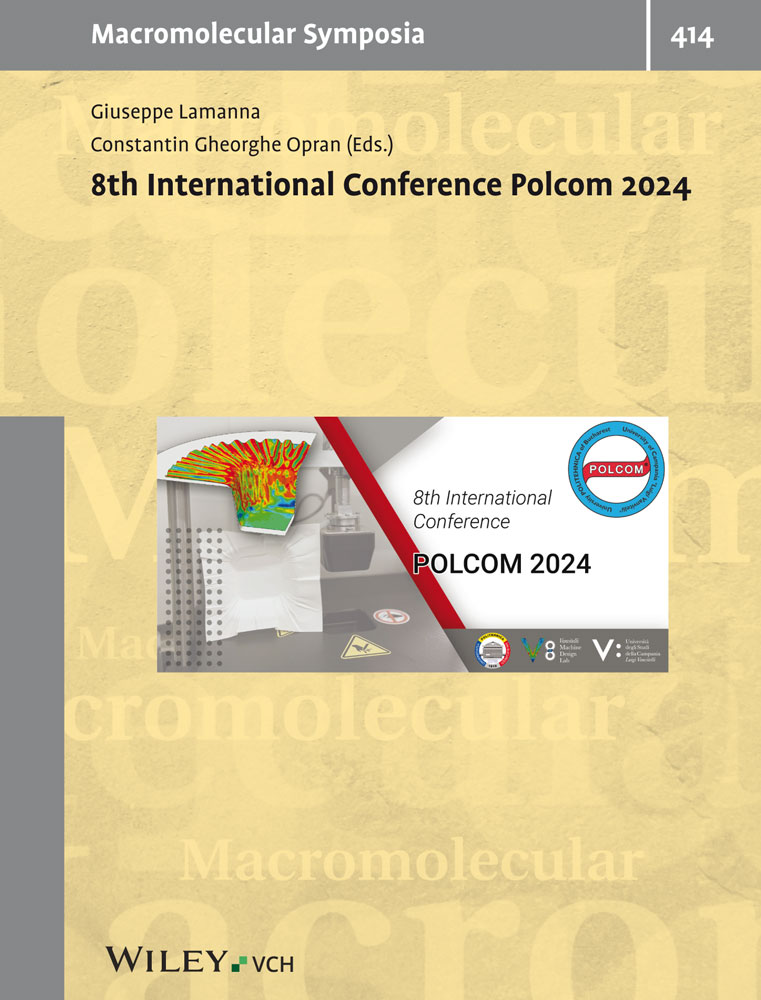Dynamics and Crystallization in Polydimethylsiloxane Nanocomposites
Abstract
Several routes were used to achieve silicon nanocomposites. The first and second one are the melt intercalation of polydimethylsiloxane (PDMS), which is a mechanical blending of the polymer in the molten state with the untreated inorganic filler or intercalated nanoparticles. The last one is an in situ polymerization, which previously requires the intercalation of hexamethylcyclotrisiloxane (D3) followed by a subsequent polymerization step. We used synthetic mineral oxide HTiNbO5 as nanofiller. These systems were investigated by differential scanning calorimetry (DSC) and solid state NMR in order to better understand the relation between the nanocomposites dynamics, and crystallisation. The efficiency of grafting reactions was studied by 29Si CP/MAS NMR. The nature of the interfacial interactions seems to play the major role. Indeed, the nanocomposites 1 and 2 for which only physical interactions are expected do not exhibit any Tg deviation whereas the nanocomposite 3, for which chemical grafting is achieved, increases strongly the Tg. Crystallization is more sensitive to density and strength of interfacial interactions which are maximum for the pristine filler.




